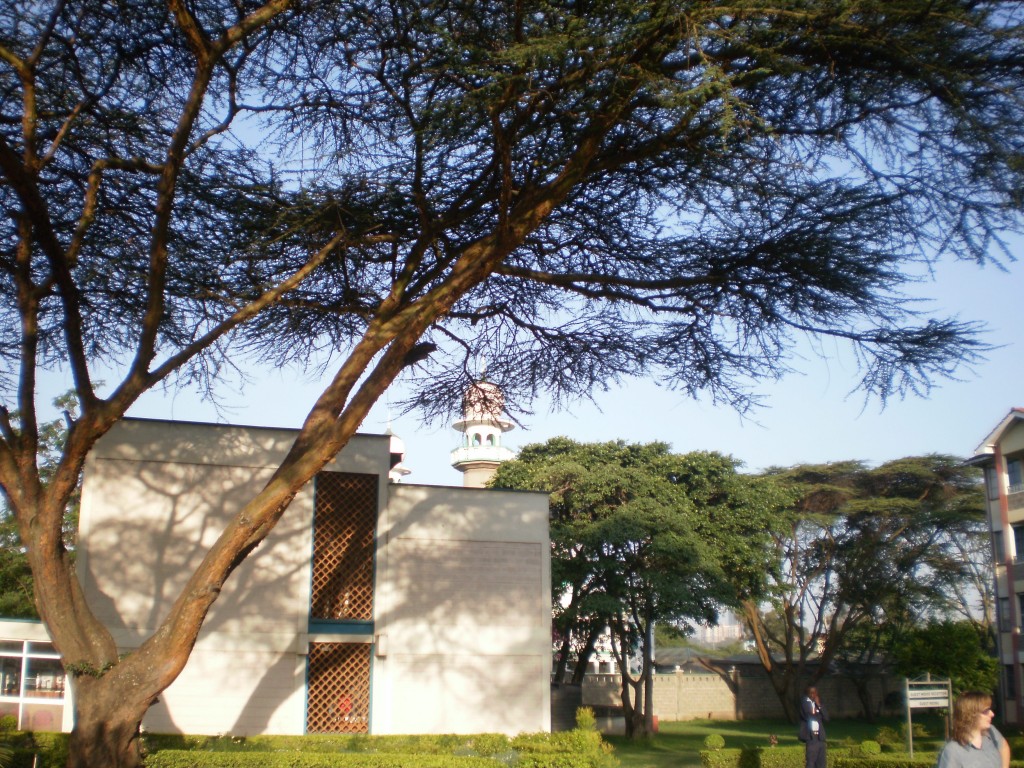
Modern Guest hose next to a shiny Mosque in Niarobi - that is Cheryl Peterson in the foreground - President of the Minnesota North District LWML
I wrote a bit about what happens when a country starts to move forward economically. Kenya is doing well relatively speaking as are many of the countries in East Africa, plus they are fighting a nasty little war that I don’t hear much about with the Al Shabab terrorists. There were two successful attacks against them this week and an incident were the terrorists attacked a police office and kidnapped a few people. Here is an excerpt from the New York Times –
Al Shabab is one of Africa’s most fearsome militant Islamist groups. The organization controls much of southern Somalia, and has waged an insurgency against Somalia’s transitional government and its Ethiopian supporters since 2006. Originally the militant wing of the Islamic Courts Union, the group that controlled Somalia prior to the country’s invasion by Ethiopian forces, Shabab leaders have claimed affiliation with Al Qaedasince 2007.
As the group has drawn increasingly close to Al Qaeda, deploying suicide bombers and attracting jihadists from around the world, it has prompted American concerns that the organization may be spreading into Kenya, Yemen and beyond.
For years, the Shabab have been terrorizing the Somali public, chopping off hands, stoning people to death and banning TV, music and even bras in their quest to turn Somalia into a seventh-century-style Islamic state.
As drought ravaged Somalia in 2010 and 2011, causing a full-blown faminein several parts of the country, the Shabab blocked starving people from fleeing the country. The group was widely blamed for causing the famine by forcing out many Western aid organizations, depriving drought victims of desperately needed food.
In August 2011, the group abruptly pulled out of the bullet-ridden capital of Somalia, Mogadishu, leaving the entire city in the hands of the government for the first time in years and raising hopes that aid groups could deliver aid to more famine victims unfettered.
The group had taken a beating in steady urban fighting against a better-armed, 9,000-strong African Union peacekeeping force. The rebels were also divided over whether to let in Western aid organizations to relieve the famine.
On Oct. 4, an enormous truck bomb was detonated right outside a highly fortified government compound in one of the few Mogadishu neighborhoods that Somalia’s transitional government actually controls. Dozens of people — many of them students standing around waiting for exam results — were killed, sending the signal that the Shabab may be making a comeback after several months of losing ground.
Two weeks later, Kenya sent hundreds of troops into southern Somalia. Officials in Kenya initially said the invasion was just meant to push the Shabab back from its border, but later hinted at more ambitious goals, saying Kenyan troops were prepared to go as far as Kismayo, a Shabab stronghold along the Indian Ocean.
The Shabab vowed revenge, raising the possibility of a broad conflict within Somalia and of terror attacks in Kenya.
If we study history I believe that the evidence is clear that a militant Muslim regime that forces sharia law on a society, takes that society inevitably back to the 4th century. If the militiants in the Sudan and Somalia have their way, all of the progress of the last 10 years will have gone for nothing. Once again the churches, especially the ELCK can stand in the gap and make a difference. As partners in Christ and partners in the Gospel we can stand with them. As we stand with them we can address and help with the obvious discrepancies.



Gary Rumain: Are we meant to be sursriped by this?In fact, yes. Still, the only real sursripe involved lies in how Sweden is at all prepared to admit that terrorism actually even exists, much less within the very boundaries of its Social Democratic Workers Paradise .